I'm in need of a diplexer that'll separate RF signals from a single feedline to two antennas. What I designed and built was a diplexer that would allow ~38 Mhz and below out port 1, with ~38 MHz and above out port 2. This is primarily to use a separate antenna on the 6M ham band and a separate antenna for the remaining HF frequencies with an output power of 100 watts.
I followed these directions: http://vk3atl.org/technical/Diplexer_1cc.pdf (PDF) using the student version of Elsie. Layed out a PCB, etched it, populated with the parts calculated by Elsie. Here's the design:

As built:

I soldered a 51 ohm resistor across each output port, then fed the input with an MFJ analyser. Below the crossover, SWR is ~1.7:1. Above the crossover, the SWR ~2.1:1. I was thinking the SWR should have been lower on both ports - around 1.5:1 or better. 1.7:1 isn't all that bad for the HF port but >2.0:1 on the VHF port isn't. My initial thoughts are the coils are too close together and need to be spread out. That's all I can think of at this point. I would redesign the PCB to have more distance between coils and make them orthogonal. What other modifications to this design should I do?
UPDATED
Pulled one of the 51 ohm resistors off the board and tested it with my LC meter. Sure enough, it looks like these resistors are wirewound.

EDITED to reduce image sizes